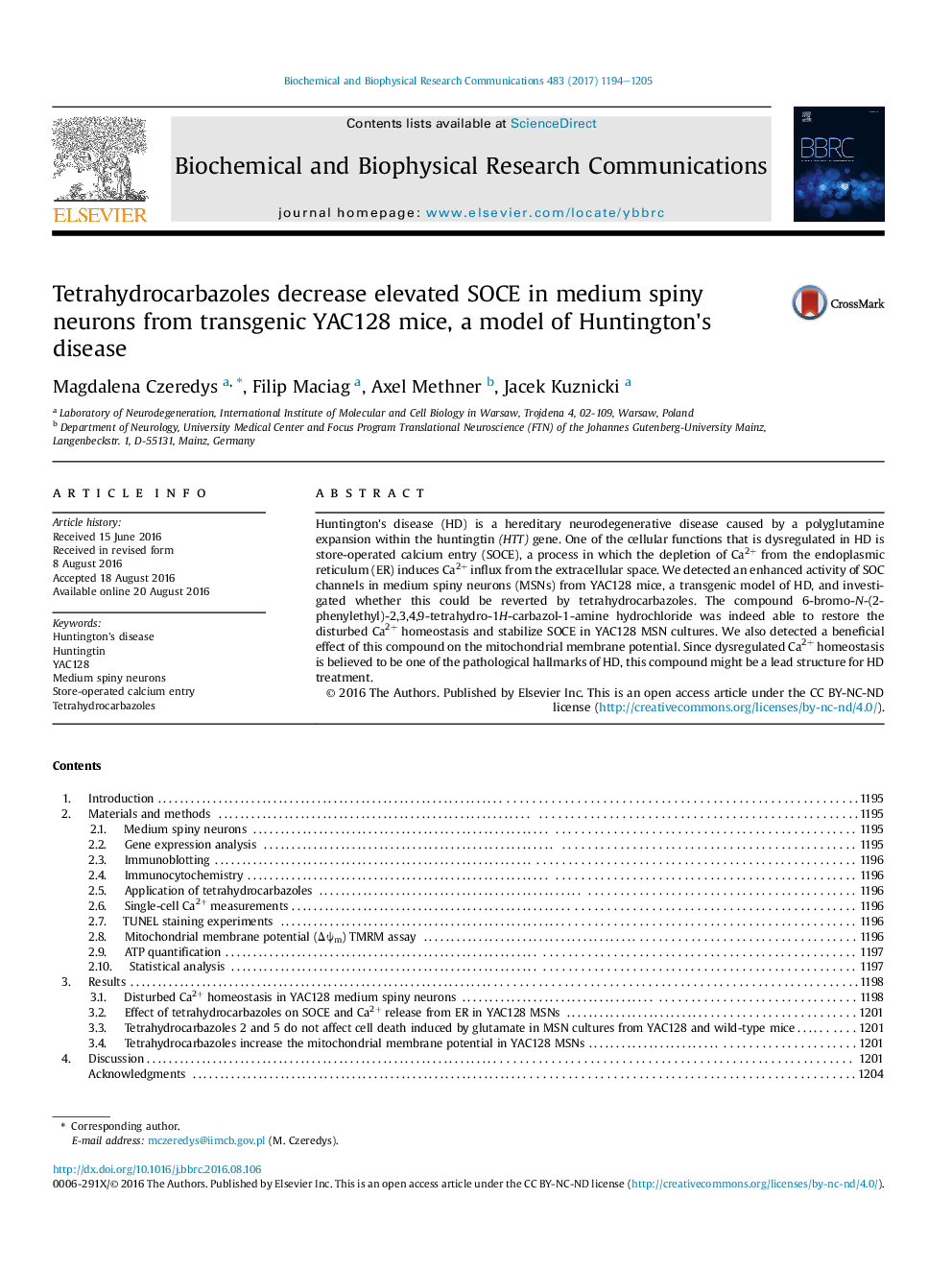| Article ID | Journal | Published Year | Pages | File Type |
|---|---|---|---|---|
| 5506433 | Biochemical and Biophysical Research Communications | 2017 | 12 Pages |
•Mutated HTT affects Ca2+ signals in MSNs from HD mouse model, but not in glial cells.•SOCE and Ca2+ release from ER increase in MSNs from HD mice compared to control MSNs.•One studied tetrahydrocarbazole rescues the abnormally increased SOCE in YAC128 MSNs.•The studied compound improves the mitochondrial membrane potential in MSNs.
Huntington's disease (HD) is a hereditary neurodegenerative disease caused by a polyglutamine expansion within the huntingtin (HTT) gene. One of the cellular functions that is dysregulated in HD is store-operated calcium entry (SOCE), a process in which the depletion of Ca2+ from the endoplasmic reticulum (ER) induces Ca2+ influx from the extracellular space. We detected an enhanced activity of SOC channels in medium spiny neurons (MSNs) from YAC128 mice, a transgenic model of HD, and investigated whether this could be reverted by tetrahydrocarbazoles. The compound 6-bromo-N-(2-phenylethyl)-2,3,4,9-tetrahydro-1H-carbazol-1-amine hydrochloride was indeed able to restore the disturbed Ca2+ homeostasis and stabilize SOCE in YAC128 MSN cultures. We also detected a beneficial effect of this compound on the mitochondrial membrane potential. Since dysregulated Ca2+ homeostasis is believed to be one of the pathological hallmarks of HD, this compound might be a lead structure for HD treatment.
